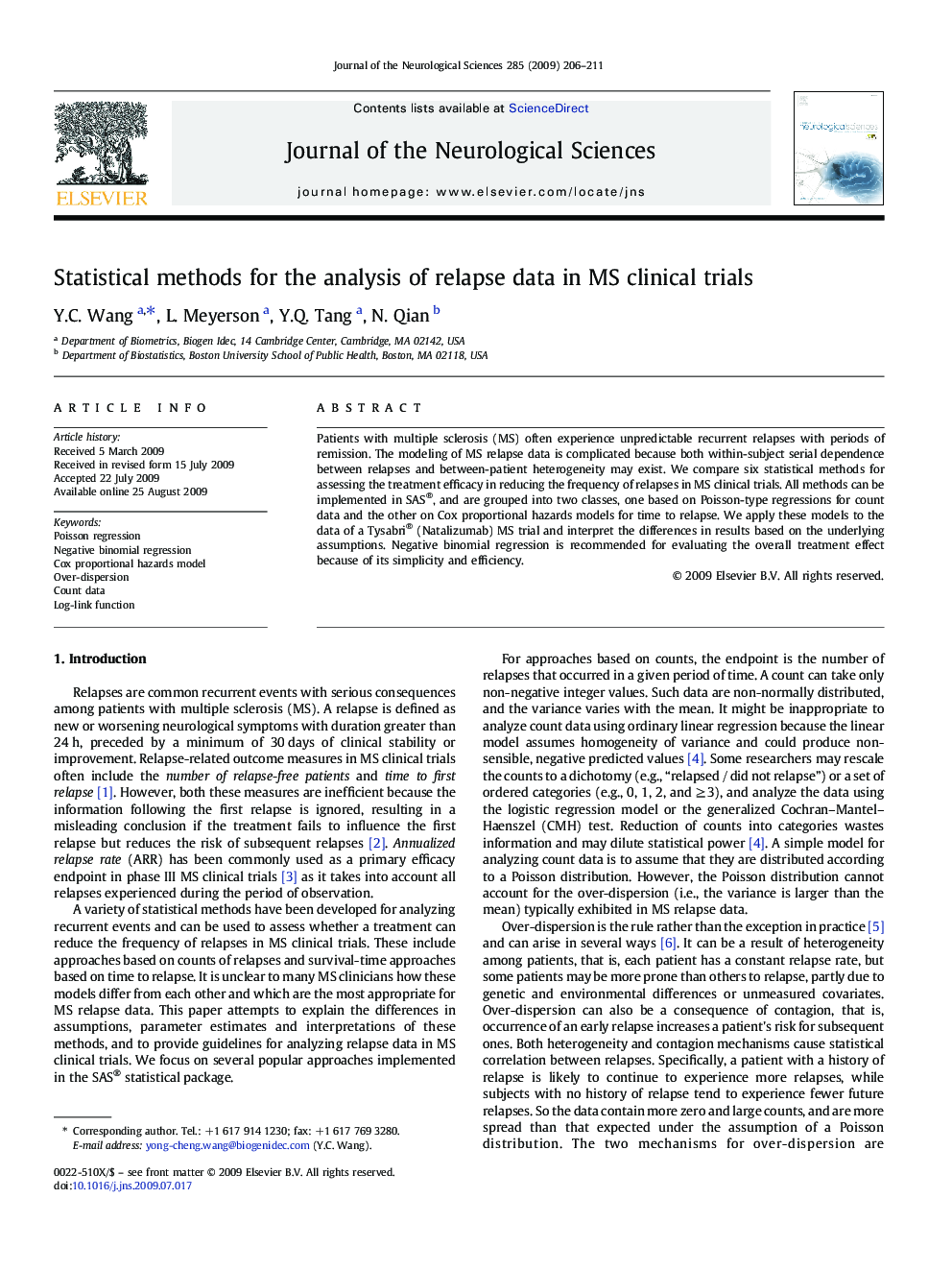| Article ID | Journal | Published Year | Pages | File Type |
|---|---|---|---|---|
| 1915050 | Journal of the Neurological Sciences | 2009 | 6 Pages |
Patients with multiple sclerosis (MS) often experience unpredictable recurrent relapses with periods of remission. The modeling of MS relapse data is complicated because both within-subject serial dependence between relapses and between-patient heterogeneity may exist. We compare six statistical methods for assessing the treatment efficacy in reducing the frequency of relapses in MS clinical trials. All methods can be implemented in SAS®, and are grouped into two classes, one based on Poisson-type regressions for count data and the other on Cox proportional hazards models for time to relapse. We apply these models to the data of a Tysabri® (Natalizumab) MS trial and interpret the differences in results based on the underlying assumptions. Negative binomial regression is recommended for evaluating the overall treatment effect because of its simplicity and efficiency.
